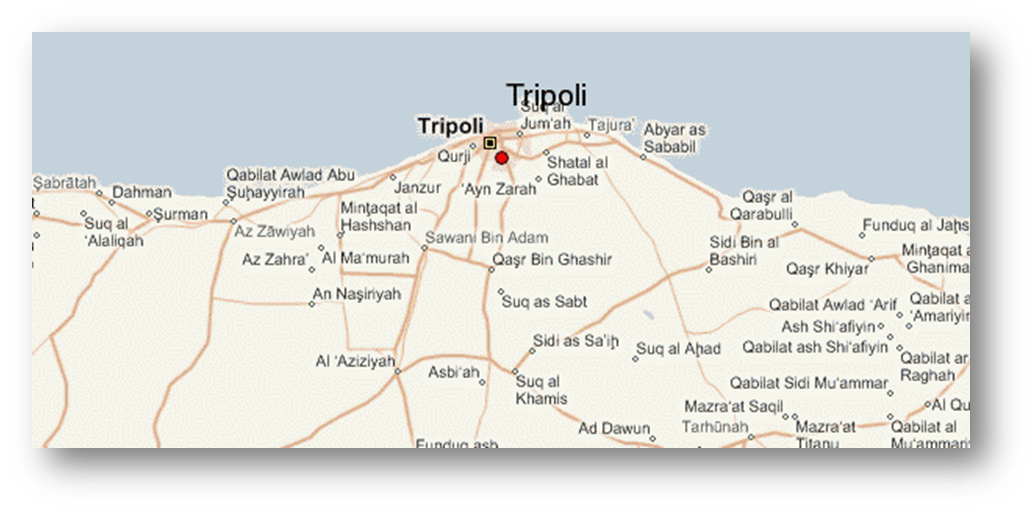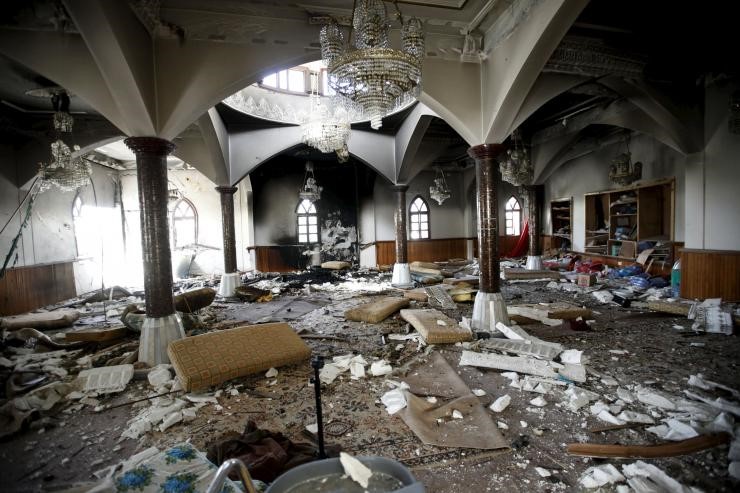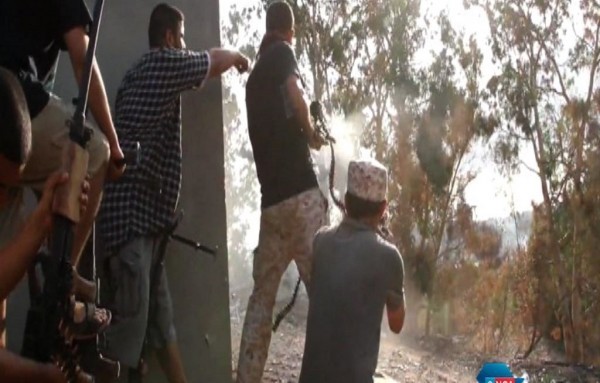Andrew McGregor
Tips and Trends: The AIS African Security Report
May 30, 2015
Armed groups supportive of Libya’s internationally recognized House of Representatives (HoR) government in Tobruk are slowly closing in on positions around Tripoli defended by armed groups supportive of the Tripoli-based General National Congress (GNC), an Islamist-dominated rival government formed by parliamentarians who did not accept the results of Libya’s June 2014 elections. However, real military progress is still impeded by factionalism and tribalism in the pro-HoR Operation Karama (“Dignity”) military coalition that opposes the Islamist and pro-GNC militias gathered under the Fajr Libya (“Libya Dawn”) umbrella.
 The military pressure on Tripoli appeared to be working in terms of eliciting a more conciliatory approach from the GNC to a UN-recommended unity government (Anadolu Agency, April 17; April 18, 2015). However, hardliners in the GNC seem to have come out on top after quickly rejecting a UN peace plan that was eight months in the works but heavily favored the HoR in its details. Part of the plan called for the replacement of local militias by Libyan National Army (LNA) units currently under the command of General Khalifa Haftar, who is widely distrusted in Tripoli.
The military pressure on Tripoli appeared to be working in terms of eliciting a more conciliatory approach from the GNC to a UN-recommended unity government (Anadolu Agency, April 17; April 18, 2015). However, hardliners in the GNC seem to have come out on top after quickly rejecting a UN peace plan that was eight months in the works but heavily favored the HoR in its details. Part of the plan called for the replacement of local militias by Libyan National Army (LNA) units currently under the command of General Khalifa Haftar, who is widely distrusted in Tripoli.
The HoR launched an offensive designed to retake Tripoli in mid-March. By April 3, pro-government forces were struggling to take control of Aziziya, 35 kilometers south-west of Tripoli (AFP, April 3, 2015). LNA forces under the command of Colonel Idris Madi (the commander of LNA operations in western Libya) claimed to have taken Aziziya by April 5, with the LNA’s use of superior French-made guided missiles cited as playing a major role in the victory (Middle East Eye, April 5, 2015).
Fighting inside Tripoli proper began in mid-April in two anti-Libya Dawn districts, the central Fashloum district and the eastern suburb of Tajura. The HoR claimed that authorities in Tripoli were using power and water cuts to pressure the residents of the two districts (Reuters, April 18, 2015; AFP, April 18, 2015). A pro-HoR rising in Fashloum lasted several days before it was smashed by Libya Dawn forces. Abdullah Sassi, the leader of the rising and commander of Tajura’s 101 Brigade, was captured and apparently killed – photos of a bloodied and seemingly lifeless Sassi with Libya Dawn slogans and insults such as “Dog of Karama” crudely written on his face with markers appeared widely on social media, though Libya Dawn leaders later claimed he was still alive and had simply had a “fit” (Libya Herald, April 19, 2015). A Twitter message allegedly sent by Sassi on April 19 accused General Haftar, Colonel Madi and the Zintanis of having “duped” the Tajurans by failing to provide promised military support.[1]
The central district of Fashloum endured three days of fighting in which Libya Dawn forces emerged victorious after destroying much of the district. According to GNC Interior Minister Muhammad Shayter, the destruction of Fashloum was the responsibility of supporters of the HoR: “In the Fashloum district, murderers and criminals who support [LNA commander General Khalifa] Haftar and Operation Dignity closed roads and started shooting workers and simple people, including revolutionaries” (Middle East Eye, April 23, 2015).
With Tripoli’s International Airport out of action since July 2014, control of Tripoli’s Mitiga International Airport, a former airbase lying between the city center and Tajura, has become of major importance for the continued existence of the GNC and Libya Dawn. It was struck by a mortar on April 3 and was the target of an airstrike by LNA forces on April 15, though, typically, little damage was done by the airstrike. The airport has been used by Libya Dawn to launch its own (generally ineffective) airstrikes on LNA targets, including an April 15 airstrike on a military base in Tajura, east of Tripoli (for Libya’s “air war,” see Tips and Trends for March, 2015).
The Role of the Warshefana
A surprising development in the struggle for the capital was the withdrawal of the Misratan pro-Libya Dawn Halboos Brigade from western Tripoli sometime between April 22 and April 25 after reaching an agreement with Warshefana elders, a move that angered the brigade’s Libya Dawn allies in Janzur, the Mobile Forces and the Janzur Knights militias. Once the Misratan forces had pulled out of the region south-west of Tripoli, Warshefana militias assisted by pro-HoR militias from Zintan began to make solid gains, working themselves closer to the western Tripoli suburb of Janzur. The Warshefana generally occupy the region south of Tripoli and are regularly identified by their rivals as having pro-Qaddafist tendencies. The Misratans may have decided to focus on defeating the Islamic State extremists with which it is clashing in both Misrata and in Sirte, east of Tripoli (Reuters, March 25, 2015).
Warshefana military leader General Omar Tantoush had earlier announced “all of Warshefana and the surrounding villages will be under official Army control and the capital’s city center will be only 13 kilometers [away] with all of the main entry points surrounded.”[2] However, Tantoush has stated that his forces have no intention of entering the capital and seek only to consolidate control over traditional Warshefana territory (which could include Janzur) (Libya Herald, April 29, 2015). On April 29, armed men kidnapped Tantoush’s cousin Mohamed Tantoush in Tripoli as retaliation for Warshefana advances (Libya Herald, April 29, 2015).
For now, the offensive seems to have slowed; further progress into Janzur will likely be met by heavy resistance from Libya Dawn-allied militias still occupying the district (Libya Herald, April 30, 2015). Warshefana militias may decide to postpone an attack on Janzur until it can be mounted as part of a broader offensive on the Tripoli region coordinated with the Libyan National Army (LNA) and its allies. The LNA is also active in the Warshefana region, advancing on Tripoli’s international airport and fighting battles for control of the coastal highway between Zawia and Tripoli (Libya Dawn, April 22, 2015). Control of the road means control of petroleum supplies to the capital, where power cuts are already common due to the Warshefana clashes. Water is also in short supply since the power cuts have affected the pumps on the Man-Made River that supplies water to Tripoli. In the meantime, Warshefana elders appear to have had several successes in negotiating the withdrawal of various Libya Dawn militias from Warshefana communities.
 Bombing Damage inside Tripoli’s al-Quds Mosque (Reuters/Ismail Zitouny)
Bombing Damage inside Tripoli’s al-Quds Mosque (Reuters/Ismail Zitouny)
The Role of Islamist Extremists
Islamist extremists seeking to disrupt ongoing Libyan peace negotiations in Morocco are now targeting foreign embassies in Tripoli, though most missions are empty due to the instability in Tripoli:
- The Islamic State organization used social media to claim responsibility for an attack by gunmen on the South Korean embassy that killed two Libyan security guards (Reuters, April 12, 2015).
- The Islamic State organization used Twitter to claim responsibility for an April 13 bombing of the Moroccan embassy (AP, April 13, 2015).
- Social media accounts again claimed responsibility for the bombing of the Spanish embassy on April 20 (Reuters, April 20, 2015; IBT, April 21, 2015).
Earlier this year, Islamic State militants carried out bomb attacks on the Iranian and Algerian embassies. Islamists are also believed to be responsible for the bombing of Tripoli’s al-Quds Mosque, a leading place of worship for Tripoli’s many Sufi Muslims, whose religious sites are frequently targeted by Salafist extremists (Andolu Ajansi, April 23, 2015).
PROJECTIONS
The threat of urban warfare and its attendant civilian suffering and damage to buildings and infrastructure is becoming particularly acute in Tripoli, one of the world’s oldest cities, founded by Phoenician traders in the 7th century BC to take advantage of its natural harbor. With clashes already breaking out in the city center, public life and the local economy are both suffering from bombings, blockades and roaming gangs of masked gunmen seeking out opponents of Libya Dawn.
For Libya Dawn, the successful defense of Tripoli is an imperative. While keeping control of the city will not ensure Libya Dawn’s eventual victory on the national stage, its loss is a virtual guarantee of the collapse of the GNC and the dispersion or surrender of Libya Dawn militias, some of which might decide coming to a negotiated arrangement with the LNA/HoR that will allow them to retain their arms and some continued measure of self-importance would be the best way to survive. While sparing Tripoli, such an arrangement will only postpone an eventual reckoning between the emerging LNA and the unruly but well-armed militias. Integration of most Libya Dawn fighters in a unified LNA seems unlikely due to the polarizing presence of LNA commander-in-chief Khalifa Haftar, who is commonly described by Libya Dawn commanders as “a terrorist.”
Notes
[1] https://twitter.com/Liberty4Libya/status/589870760942051328
[2] https://www.facebook.com/permalink.php?id=1649305608630612&story_fbid=1664134897147683 (April 15, 2015).

